Review for Akame Ga Kill!: Collection 1
Introduction
Akame ga Kill is one of those special titles. Back, ten years ago when anime used to be on television in the US, the special titles would escape from the speciality anime blocks on satellite TV and make it to more mainstream time slots, or even a mainstream channel. The equivalent these days is escaping the Crunchyroll and Funimation streams and actually getting an airing on Netflix! In these days of anime streaming, Akame ga Kill actually made it onto TV, through Toonami. Of course we in the UK got it on Crunchyroll. Sentai Filmworks in the US gave it the same sort of treatment that they gave Knight of Sidonia. Sentai’s standard operating procedure in localising anime is to dub it in stereo, and stick translated credit reels at the end of each episode. For Akame ga Kill, they’ve created a 5.1 Surround dub, and they’ve got proper English language credit sequences for the episodes. Animatsu who are releasing the show in the UK aren’t holding back either, giving the show a standard DVD and Blu-ray release, and a Deluxe Collector’s Edition containing the show on Blu-ray and on DVD, a rigid outer box, a hardcover collector’s booklet, tattoos, sticker and a poster. And this is just the first half of the series.
Tatsumi’s village is in dire straits. The burden of taxation and harsh rule in the kingdom has left the community on the verge of utter failure, and so it is that the village elder sends three of the best and brightest of its young to the Imperial Capital, to become heroes, and rake in some money. The three are Tatsumi and his childhood friends Ieyasu and Sayo, although they go their separate ways. When Tatsumi gets to the capital, he’s in for a rude awakening, as corruption and abuse is rife in the city, with the rich and powerful feasting on the marrow of the poor and general citizenry. Tatsumi’s plan to join the Imperial Army comes to a quick end when he can’t afford the bribe, and what he thought was a Good Samaritan quickly relieves him of his remaining money.
When all is lost, a genuine kindly soul takes pity on him, the daughter of a rich family gives him a roof over his head, and Aria’s father even offers to help him with his military application. But Aria’s family have been targeted by assassins, none other than the lethal Night Raid group. Tatsumi’s ready to defend his new friends, but lethal assassin Akame of Night Raid is about to give Tatsumi a rude awakening to how the rich and powerful of the Imperial Capital live. Night Raid aren’t just killers. Aided by the legendary magic Imperial Arms weapons, they bring their skills against all that is dark and corrupt in society, with their ultimate goal to remove the child Emperor, and the evil Minister that pulls his strings. They’re all about revolution, and Akame is about to give Tatsumi a job interview. If he passes, he’ll be getting in way over his head.
The first twelve episodes of Akame ga Kill are presented across two discs from Animatsu.
Disc 1
1. Kill the Darkness
2. Kill Authority
3. Kill the Grudge
4. Kill the Imperial Arms User
5. Kill the Empty Dream
6. Kill Absolute Justice
7. Kill the Three Beasts – First Half –
8. Kill the Three Beasts – Second Half –
9. Kill the Lust For Combat
Disc 2
10. Kill the Seduction
11. Kill the Mad Scientist
12. Kill the New Recruits
Picture
Akame ga Kill gets a 1.78:1 widescreen 1080p transfer on these Blu-ray discs. It’s pretty much par for the course for modern anime on Blu-ray, the image is clear and sharp throughout, there’s no visible sign of compression, and the animation comes across smoothly, and without significant issue. The one thing that you can’t get away from is the usual digital banding, but here it’s most striking during the opening credits. A shimmering red flag winds up looking like a weatherman’s low pressure contour map. Akame ga Kill is a great animation though, fluid, and energetic, with the trinity of great character designs, impressive world design, and striking action sequences, maintained at a high level throughout.
The images in this review have been kindly supplied by Animatsu.
Sound
You have the choice between DTS-HD MA 5.1 Surround English with a signs only track, DTS-HD MA 5.1 Surround English with closed captions (dubtitles), and DTS-HD MA 2.0 Stereo Japanese with a translated English subtitle track. These three audio and subtitle options are locked during playback, although you can change between them with the pop-up menu. The first thing that struck me was the show’s music. Not just the theme songs, but the incidental music is quirky, stylish, and really quite singular. It’s not the kind of music that you’d expect from a show like this, but it works brilliantly. I wasn’t surprised to see Taku Iwasaki’s name in the credits, the musician behind R.O.D. The TV, Witch Hunter Robin and Soul Eater’s music among others. The original Japanese track was fine by me, with enthusiastic, if character generic voices conforming to current fan expectations, and the action coming across well. I warily switched to English, and was surprised to find a Sentai dub which isn’t the usual Sentai dub. It’s actually good! The characters are well cast, the actors get a chance to perform as well as emote, and the translation is good too. I guess with the show broadcast on TV, Sentai couldn’t afford to phone this one in. That makes the 5.1 mix all the more special if you have a home cinema set-up to take advantage of it, as this is an action packed show.
Extras
The discs present their content with animated menu screens. Disc 1 autoplays with a trailer for Knights of Sidonia.
Disc 2 has more Sentai trailers for Parasyte – The Maxim, Black Bullet, Brynhildr in the Darkness, and Knights of Sidonia again, and serendipity strikes, as these are all Animatsu titles as well.
Also on the disc, you’ll find the AkaKill! Theatre, 12 short animations, around a minute each, which I expect were played after the episodes ended, to allow for some pure comedy and fan service, without being drenched in darkness and blood.
There are three Japanese Promos for the show on the disc, and you’ll also find the ubiquitous Textless Credits.
Conclusion
Have you ever wanted not to like something, but wound up enjoying it despite yourself? That’s me with Akame ga Kill, which on the surface is just what I am not in the mood for from my anime. It’s crass, violent, ill-considered, and wholly uneven of tone, mixing the usual anime character stereotypes and daft humour with a dark and unrelenting storyline. It shouldn’t work, and it should fall flat on its arse, but through sheer force of enthusiasm and entertainment value it turns out to be quite compelling. It also doesn’t hurt that the narrative is really well constructed, and the show manages to deliver a few surprises along the way. By the time I’d got to the end of this collection, the halfway point, what had started off as a reluctant, ‘let me just pump out a review so I can get to the more interesting titles’ turned into, ‘just when is Part 2 out again?’ Somehow, Akame ga Kill’s unlikely mix of full-on comedy with dark drama and violence winds up working a treat, although you really do have to give it a few episodes.
That unevenness of tone is evident right from the first episode, with the show starting off like some kind of mediaeval action comedy, introducing its protagonist Tatsumi as the usual hapless teen male in heroic clothing (although oddly the clothing includes what looks like a Marks and Sparks lambswool sweater). He establishes his heroic credentials by scything through a massive beast, saving a caravan in the process. The grateful caravan drivers warn him against heading to the capital, but Tatsumi needs to make his fortune to help his beleaguered village. His introduction to the capital isn’t as he expects, coming face to face with corruption and petty thievery, but his faith in humanity seems to be restored when the young girl Aria comes to his rescue. To this point, the whole story is being played for laughs, lightly, and without a hint of what is to come.
What is to come is the reveal of what Aria’s family is actually all about. They are just as corrupt as any nobility in the capital, and their act of charity is actually their means to gather samples for their experiments in torture and sadism. Tatsumi finds this out the hard way, when Night Raid attacks the mansion to slaughter the family, and he tries to defend them, only to be led to a building where they conduct their grisly torture. It’s an abrupt shift in tone that isn’t easy to get used to, but when the vengeful Tatsumi slices the cute and perky Aria in half, he passes the test to be a member of Night Raid, and the pattern is set of how this show will play out.
The episodes in this series will dish out a whole lot of cute and funny, making the most of the somewhat stereotypical characterisations, before turning on a sixpence and wallowing in depravity, blood and guts and the dark side of humanity. Night Raid are a group of assassins after all, and even with their stated aim of fostering and making the nation ripe for revolution, the bottom line is that they are murderers, something that is stated on more than one occasion as Tatsumi has to decide whether to join, and then as he is trained up. The Night Raid group really do conform to the usual stereotypes, and giving Tatsumi a potential harem, most of them are female. Of the two other males, Bulat is really... well he’s Space Dandy, but gay, supremely confident and extroverted, and who Tatsumi soon looks on as a big brother figure. In contrast, the wire wielding Lubbock is the least developed of the characters here. Akame herself fits the off-beat, quiet girl stereotype, the one who sees the world slightly askew, but who takes an interest in Tatsumi. Leone is big, busty, and leonine, the blonde who relieves Tatsumi of his cash in the first episode, and she’s fun loving and tactile. Mine is the classic tsundere fire-cracker, all in pink, while Sheele is the clumsy glasses girl. That leaves Najenda, their leader, the kind of woman who looks down on her subordinates with amused affection. And all of them are lethal killers.
The foes that they face through the episodes are similarly quirky. It’s a bit of a spoiler but Akame’s sister shows up towards the midpoint, and she’s another lethal psychopath of a character, who otherwise spends her time jealously guarding her snacks, while Seryu is probably the most likeable girl in the series, just wholesome and nice, unless she has vengeance on her mind, when her features become distorted by pure hate.
The set up is pretty simple, a city and nation that is being crippled by tyrannical rule, a child emperor puppet and the first minister pulling his strings, and that tyranny and corruption making its way down all strata of society, becoming ingrained. Against it is the revolutionary movement which we are yet to really encounter, and the Night Raid group that are softening up the opposition by assassinating key targets before the inevitable uprising, their ultimate target the First Minister. The show unfolds like a game of one-upmanship, with Night Raid taking out a target, and inviting a response from the opposition, the stakes getting higher with each episode, the challenge getting tougher. What is surprising about Akame ga Kill is that despite its obvious love for its main cast, evident in how they are developed, how much they get to shine in the episodes, it’s not shy about killing them off, and a couple of notable characters don’t make it to the end of this collection.
Around the midpoint of this collection, the threat from Night Raid is so high, that the First Minister recalls the most bloodthirsty general in the army to take charge of the Night Raid hunt. Once again the out of place comedy strikes, and the lethal genocidal maniac (she deals with the Empire’s foes by wiping them out completely) is an elegant woman named Esdeath, and when offered anything at all for accomplishing the mission, she decides that she wants to fall in love. She even draws up a list of admirable qualities that she wants in a mate so that the First Minister’s underlings can go recruiting. The comedy arises when it turns out that her ideal man as defined turns out to be Tatsumi.
This being an action anime, it wouldn’t be as impactful without special abilities or magical powers, and so we get the Imperial Arms. These devices were created in a distant past, and those who have the affinity to equip them get some serious eye candy powers. The technology to create them has vanished, and they’ve been disseminated and mostly lost since the last civil war, which is why characters on both sides have them, and a secondary mission for Night Raid is to find and recover even more. Given the aesthetic and design of some of these weapons (and Tatsumi’s sweater), this world tends to look like a distant future world where modern civilisation has collapsed, rather than a historical fantasy.
Akame ga Kill is silly, it’s daft. But it is entertaining along with it, and eventually becomes compulsive viewing. The tone of the show is all over the place, the characters disappointingly generic stereotypes, but the writing of the show is strong, and the story once it gets going is really interesting. I went into the show expecting something more along the lines of Berserk, or Black Lagoon tonally, but it’s more as if Black Lagoon was a harem comedy. Akame ga Kill definitely grows on you, but it will be down to Part 2 to make it a classic show.
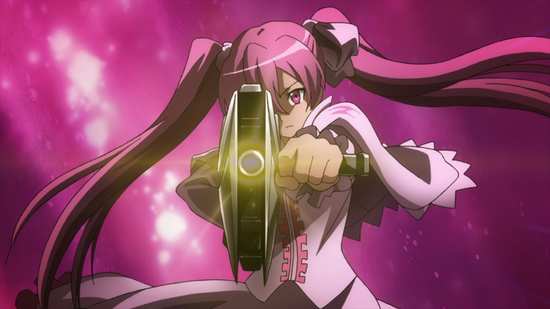
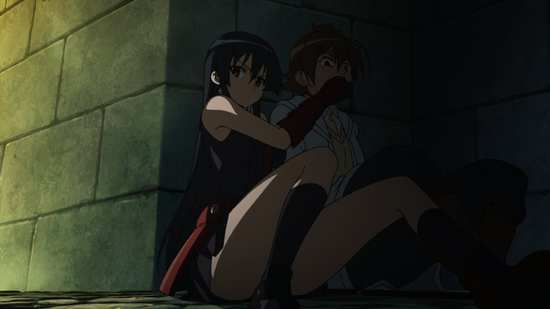

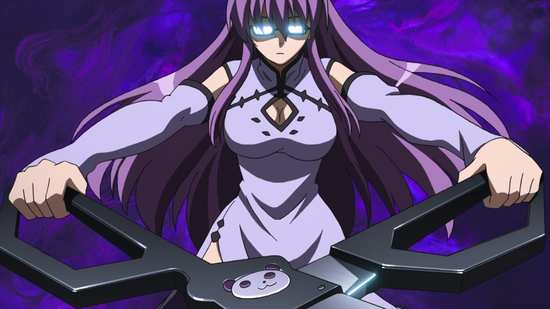
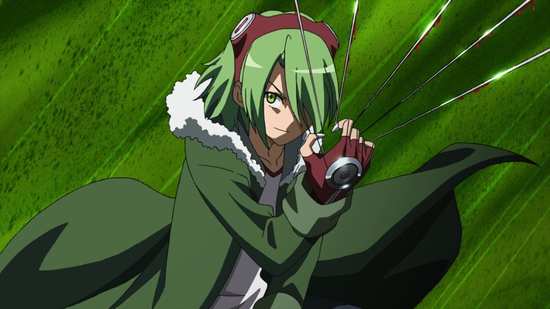

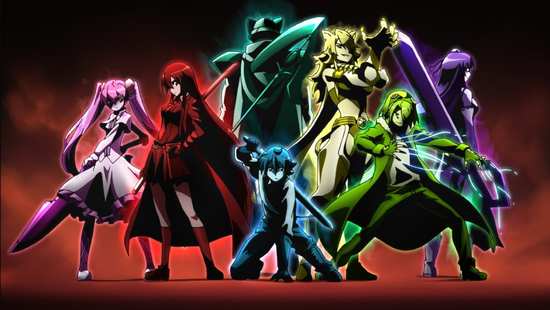
Your Opinions and Comments
Be the first to post a comment!